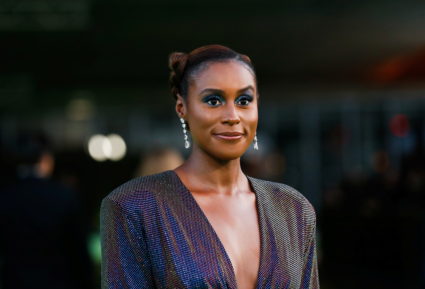
ABC will continue broadcasting the event until 2028, which will mark the 100th Oscars. This shift announced Wednesday represents a…

LOS ANGELES (AP) — Television fare that reflects the nation's increasing racial and ethnic diversity is finding favor with industry gatekeepers and viewers, according to a study of the 2019-20 TV season released Tuesday.
Despite the pandemic that stymied Hollywood production, there were varying measures of growth in the hiring of people of color — and women — in on- and off-camera jobs, researchers at the University of California, Los Angeles, said in the report.
In return, audience enthusiasm for shows such as creator-star Issa Rae's "Insecure" and the miniseries "Watchmen" with Emmy-winning actor Regina King proved that inclusion pays business as well as social dividends, said Darnell Hunt, dean of the school's social sciences division.
The report's biggest takeaway is "the mounting evidence for how important diversity is to today's audience," Hunt said in an interview. He co-wrote the annual report with Ana-Christina Ramón, a UCLA social sciences research director.
Across streaming, cable and broadcast platforms, viewership among adults age 18 to 49 peaked in many cases when a show had a "majority-minority cast," Hunt said.
That conforms to the changing United States. In 2010, four years before UCLA issued its first report on Hollywood's diversity record, whites represented 63.7% of the population. In 2020, that Census figure was just under 58%, the lowest on record.
"People basically want to see the TV shows that look like America, that have characters they can relate to and have experiences that resonate with them," Hunt said.
That builds on and reinforces previous findings for TV, he said. It also reflects the counterpart UCLA film study released earlier this year.
For all households including whites, for example, median ratings were highest for scripted broadcast shows in which people of color were between 31% and 40% of the credited writers, the study found.
For white, Latino and Asian American homes, median ratings peaked for scripted cable shows whose casts were from 41% to 50% people of color, while Black household ratings were highest for shows with "majority-minority casts," the report said.
People of color fell short of parity in lead acting roles on all platforms. But for the first time in the report's history, overall cast diversity on scripted broadcast TV was slightly higher than in the general U.S. population (just under 43% ethnic and racial groups).
While actors of color also came close to "proportionate representation" in cable and streaming, most of the gains could be attributed to the increasing share of Black and multiracial roles, researchers found.
Asian Americans — the country's fastest-growing group — and Latinos remain underrepresented, while Native Americans are "virtually invisible," the report said.
As study co-author Ramón sees it, the problem lies partly with the industry's white monolith of network and studio executives who tend to view those ethnicities "very niche."
"I think they oftentimes think of stories from Latinx creators and Asian American creators as something really quite peripheral…. and not appealing to the quote-unquote mainstream," she said.
Hunt also cites "unimaginative" executive-suite decisions that reduce diversity to a choice between Black or white hires which he said underscores the need for other ethnic groups to fill decision-making roles.
The study examined a total of 461 scripted shows across all platforms to determine the employment inroads made by women and people of color as actors, writers, directors and series creators.
Generally, there was an increase in racial diversity in nearly all the job categories, with representation among women improving in roughly half of them.
Compared to the previous UCLA report, more people of color were credited writers across all of TV, with the percentage on broadcast episodes increasing from 23.4% to 26.4%; on cable, from 25.8% to 28.6%; on streaming, from 22.8% to 24.2%.
According to the study, "most of these gains can be attributed to women of color" — for instance, Robin Thede and her HBO series "A Black Lady Sketch Show." In contrast, men of color increased among broadcast credited writers but "treaded water in cable and digital."
Sustain our coverage of culture, arts and literature.